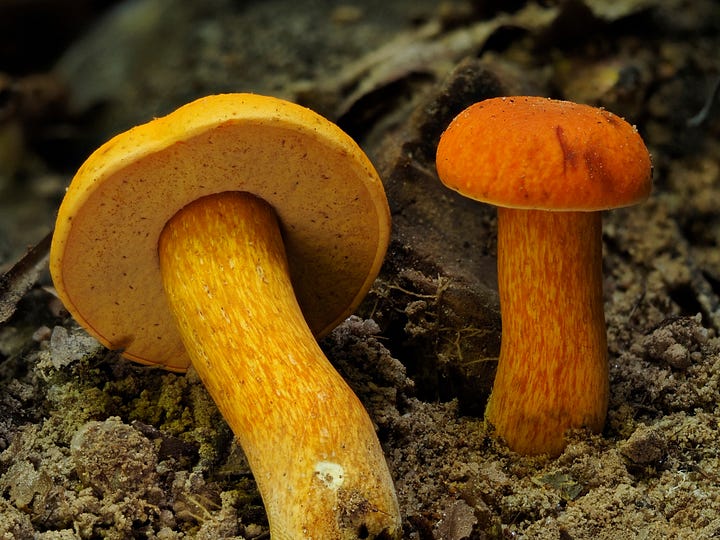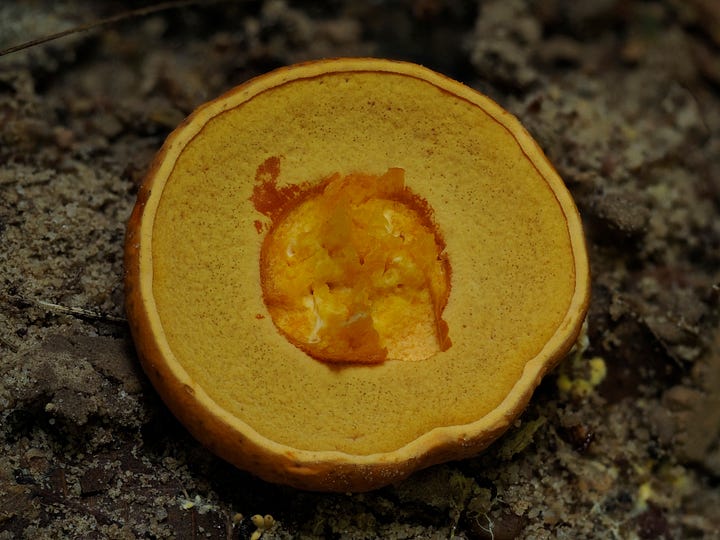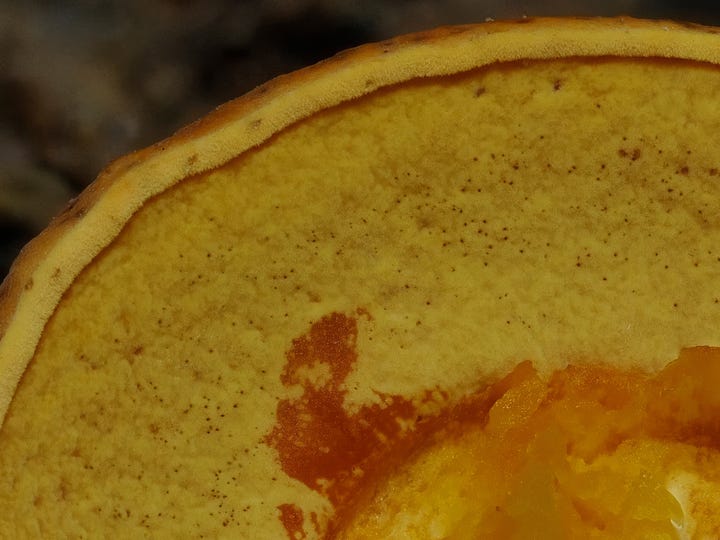I explored the Dragon’s Crest trail during my final adventure in Krabi. Known for its rigorous climb that promises one of the town's most spectacular viewpoints. I’ll confess now - I fell short of reaching the viewpoint.
My attention was spent on the trail's edges, where I was engrossed in the search for mushrooms. The week-long absence of rain made this task challenging. Also, 35C /95F temperatures didn’t help much, either!
This focus led me to encounter a harmless two-meter-long rat snake and a juvenile Asian water monitor.
I tend to scout out on iNaturalist what dangers lurk in the forest. In this case, the Monocellate Cobra (Naja kaouthia) and Malayan Pit Viper (Calloselasma rhodostoma).
One can never be too cautious, and although no tourists have been bitten (to my knowledge), I do not wish to become the first.
The shade covering most of the trail made the journey somewhat easier. However, I met numerous hikers on their descent; their expressions of exhaustion and remarks on the trail's difficulty—declaring it miserable—did little to encourage me.
The looks on their faces solidified my decision not to push forward but rather to enjoy the moment, leisurely taking photos.




A recurring motif of my hike was the vibrant hue of orange, highlighted by the presence of what I’d previously thought was a Crocinoboletus sp. - but now reckon it may be something closer to Xanthoconium sp.
The similar looking one I once before at Penang National Park in Malaysia.




I noticed that the pores on younger, uninfected specimens are compact, akin to Tylopilus sp., yet an older one appearing to be parasitized with Hypomyces sp. (maybe) has altered the pore appearance.
Following the theme of orange, I noticed many little bright yellow/orange truffle-like mushrooms were embedded in the soil along the track.
I found out later that they were Mycoamaranthus cambodgensis, a wild edible mushroom used as folk medicine by Thai healers.
The mushroom is used in traditional medicine to help maintain regular menstrual cycles, treat tumors, and nourish health.






A 2020 study investigated its potential health benefits, including anti-oxidative, anti-inflammatory, and anti-estrogenic effects.
It is naturally found in the forests of Thailand and several southeastern Asian countries and is in the family Hymenogasteraceae.
When handling them, the thin yellow outer membranous layer flakes off easily, like dry paint or akin to picking off BIC wite out correction tape. And when bisected, you can see its white gleba changes to dark brown gleba upon maturation.







After around 4 hours, I had to call it quits. But even given the dry and hot conditions there was still much to find. Till next time!

















Share this post